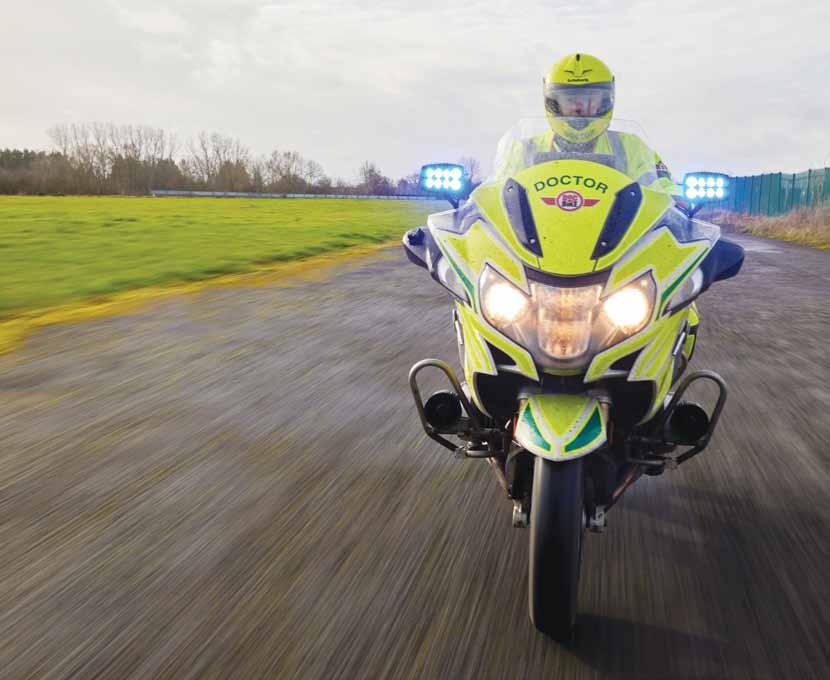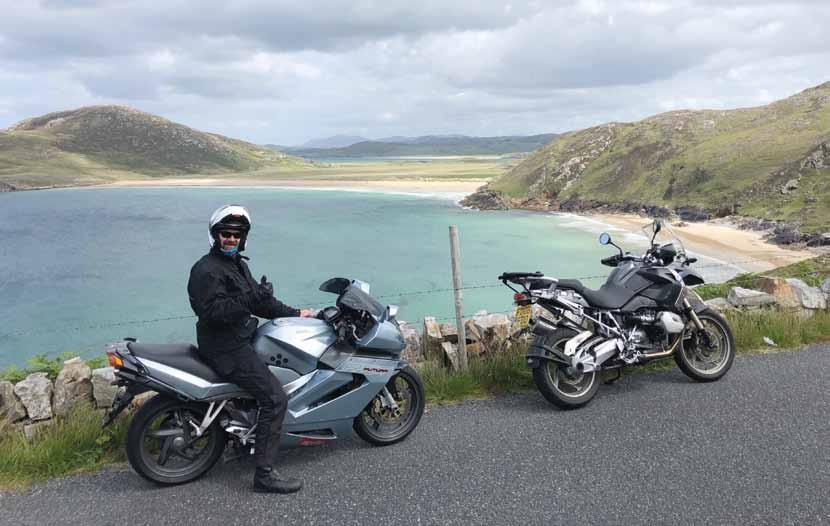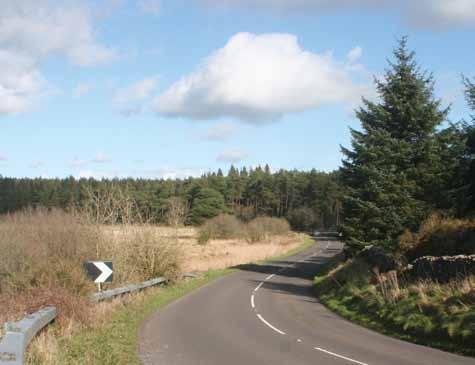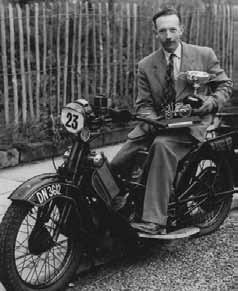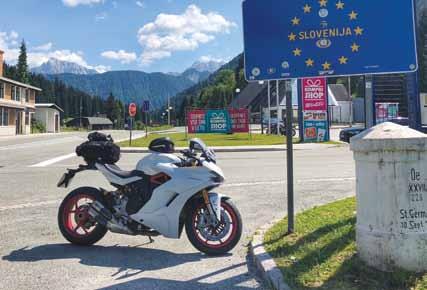
3 minute read
OPINION
neW WoRLd DISORDER
I’ve pontificated elsewhere on the pros and cons of cheap Chinese bikes over the past few years but I’d never ridden one for more than a day until 2015 when I took over the tenure of a Lexmoto 125 Adrenaline on long-term loan to one of the other organs I scribble for. So for once I knew what I was talking about when assessing the appeal of an entry-level budget bike. And overall I must say that I liked what I knew.
Advertisement
That £1499 bike marketed by its parent company Llexeter Ltd was a funky looking supermotard-style machine that on the face of it ticked most of the boxes any aspiring young biker would demand: snazzy, angular on-trend styling – tick; wide bars and an aggressive riding position – tick; a willing engine with electric boot – tick; big and comfortable enough for a gangly six-footer – tick. There were also some quality touches that belied its low price and third world roots, such as the stainless exhaust system, the tough Akront-style alloy wheels, LED indicators, a really nicely-made seat and a lithium-ion battery.
Moreover and just as important, it was good to ride. Just a few seconds of choke fired up the Suzuki-licensed GS125 copycat engine, and it pulled strongly from around 2500-3000rpm well up to the 9000rpm redline, the importers quoting max power of 8.4kW 500rpm further up the line. True, the torque wasn’t hang-on-tight gobsmacking, but it was only an old-school, aircooled 125 like its current successor, the Lexmoto Assault that’s also CBT legal and meets Euro 4 emissions. Which is exactly the same as the eighth-litre entry-levellers offered by Honda and Yamaha costing over a grand more.
True, the bike wasn’t quite in the same ballpark build qualitywise… yet. The polypropylene plastics were chunky, flexible, well fitted and finished, but after I’d ridden the bike in the rain a few times, some of the decals were starting to peel away. The chain and sprockets were also showing signs of undue wear after less than 400 miles – a common criticism of down-toa-price Chinese manufacturing – and had to be replaced with heavier duty items from Llexeter’s own aftermarket operation, albeit at highly competitive prices. And the strangely patterned Longstone tyres weren’t my idea of grippy, especially in the wet, so these too were replaced with Contis. But with its hefty USD forks, steel monoshock swingarm and conventional cradle frame, the bike itself felt well planted and handled in an entirely biddable fashion.
And of course much the same could be said of some of the other 125s I looked seriously at before taking on the Adrenaline, models wearing the Zontes, WK and modern AJS brand badges, some of which I’ve also ridden, if only briefly. But the point surely is that to get youngsters boosting the steadily declining number of British bikers and onto the licensing ladder – however ludicrous the ladder might be – these cheap Chinkies are a godsend, and if properly maintained and with a little judicious climate-proofing, they’ll become durable and residuals will gradually rise. And if not, why are some of their importers now offering a two-year warranty?
But, you may ask, money, where, mouth, put, etc., etc…? Well three years later I actually bought a Chinese bike myself. Well technically it’s an SWM Gran Milano but the company that assembled it in the old Husqvarna factory in Varese, Italy, is owned by Shineray who supply their engines – updated knockoffs of the ancient Honda XBR500 motor – and many of the other Chinese made components. And it’s a solidly built, wellequipped, modern motorbicycle that’s the equal of almost anything else in it class and cost significantly less than all of them except the Enfield Himalayan…which is made in India.
And before you sneer at my capitulation to third world manufacturing, just bear in mind that many of the Big Four’s products are already wholly or partly made in third world countries, as are some BMWs, Harley-Davidsons, KTMs and, yes, that bastion of British motorcycling pride, Triumph.
Mark Williams founded Bike magazine in 1971 and not having learnt his lesson went on to launch WhichBike?, MotorCycle International, Classic Bike Guide and others, some of which still miraculously exist. Since he couldn’t ever find a production model that suits him, his main interest these days is building custom bikes.


